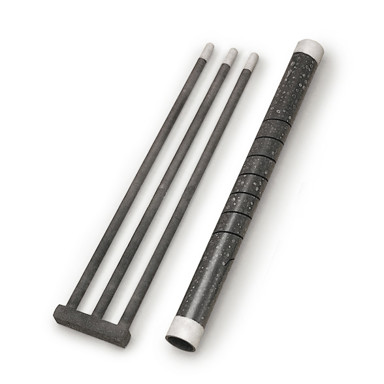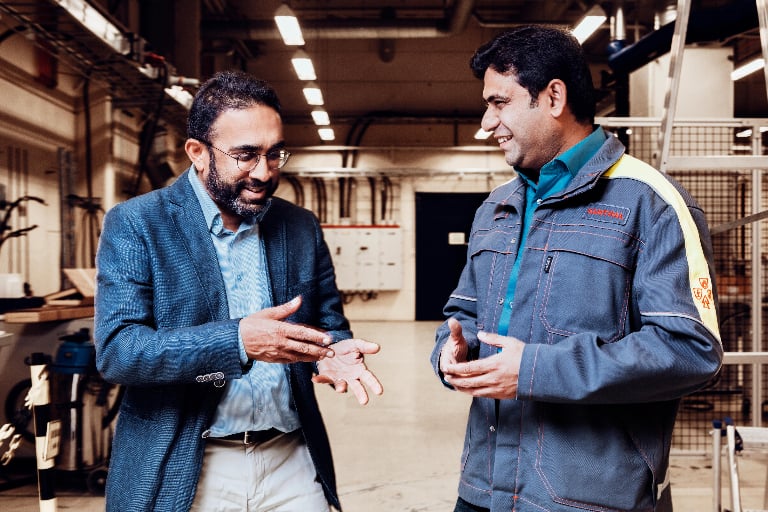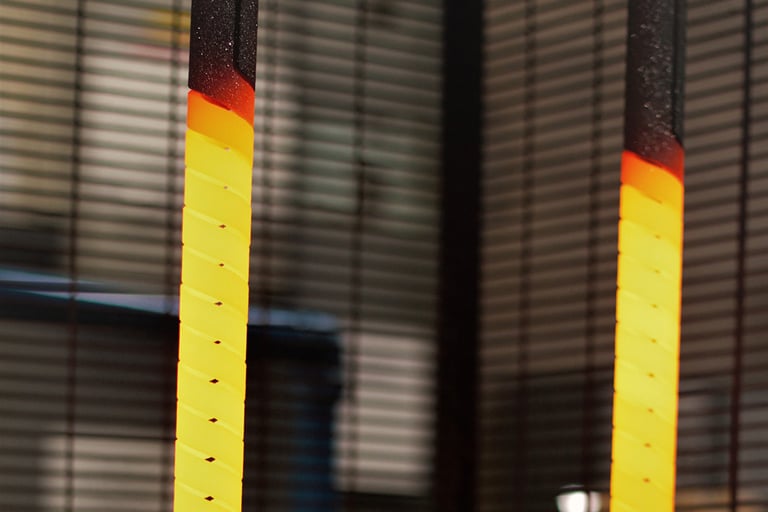Within the glass manufacturing process, the forehearth furnaces play a vital role in cooling the melted glass before it is shaped into its final product, such as glass jars, bottles and other containers, or fiberglass. Maintaining temperature uniformity in the glass is vital to avoid defects and thickness variations in the finished product.
Forehearth glass furnace in brief
Forehearth furnaces are used for cooling melted glass before it is shaped into its final form. The temperature must be brought down uniformly and the process must be tightly controlled to avoid defects or thickness variations in the glass.
 Lemon Xu, Business Controller, Kanthal.“Even though the purpose is to cool the glass, the forehearth furnace requires supplementary heating in order to control the cooling process and ensure the glass has the required temperature uniformity,” says Lemon Xu, Operation Manager and Business Controller at Kanthal. “Cooling through open vents is one aspect of the process of thermodynamics, but supplementary heating with electric heating elements offers much more flexibility, allowing users to control the temperature of the glass much better and get the properties that they need.”
Lemon Xu, Business Controller, Kanthal.“Even though the purpose is to cool the glass, the forehearth furnace requires supplementary heating in order to control the cooling process and ensure the glass has the required temperature uniformity,” says Lemon Xu, Operation Manager and Business Controller at Kanthal. “Cooling through open vents is one aspect of the process of thermodynamics, but supplementary heating with electric heating elements offers much more flexibility, allowing users to control the temperature of the glass much better and get the properties that they need.”
From electric heating to gas, now back to electric
Historically low gas prices led to many forehearths being designed with fossil fuel firing. However, in recent years the industry has started to switch back to electric as many users look to reduce their carbon footprint.
“Electric heating can be more efficient than gas, and it gives you far more control, with no noise and no emissions to manage,” says Xu.
Finding the right heating solution
Kanthal has been supplying Globar® Silicon Carbide elements to forehearth furnace builders for decades and has developed a range of solutions depending on the furnace’s requirements. Some common solutions include Globar® SD/AS and high-density Globar® SG elements, which can be supplied with a split hot zone that can help improve temperature uniformity of the glass. Kanthal can also offer U-shaped elements, with all the electrical connections fitted on one side, making it an effective solution for furnaces where space is limited. Globar® elements are available in several different material grades, including high-density grades for more volatile forms of glass.
“We have a lot of different options depending on the type of glass being manufactured,” says Xu. “We have been supplying elements to forehearth furnace builders for decades, and in that time we have accumulated a lot of knowledge and experience with their processes. Our solutions are tried and tested, and people know they work.”
Four key benefits of Kanthal Globar® SiC heating elements in forehearth furnaces
- Precise temperature control: Compared with gas heating, Globar® SiC electric heating elements can provide far more targeted heating to ensure better temperature uniformity across the glass.
- Higher efficiency and lower emissions: Again, compared with gas heating, electric heating has far lower energy losses and releases no harmful exhaust emissions.
- Wide range of solutions: Globar® SiC heating elements are available in different shapes and material grades, depending on the needs of the furnace.
- Proven expertise: Kanthal has been supplying heating elements to forehearth furnace builders for decades and has extensive experience and knowledge of their processes.
Prodotti correlati
Qui puoi trovare l'offerta dei prodotti Kanthal
Read more
I nostri articoli più recenti


